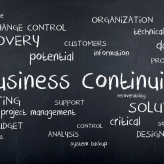 Technology is the heartbeat of modern medicine, which is why IT expertise is a skill that’s growing in importance from year to year. With the increasing complexity in data systems, managed services providers (MSPs) are more valuable than ever.
Technology is the heartbeat of modern medicine, which is why IT expertise is a skill that’s growing in importance from year to year. With the increasing complexity in data systems, managed services providers (MSPs) are more valuable than ever.
Here are some things to look for in a managed services provider before you consider partnering with one.
They guarantee response times
When it comes to providing healthcare services, fast response is not the only thing that matters. You should always make sure that your provider guarantees response times, and that you’re able to contact them 24/7. In case something breaks or you come across technical issues in the dead of night, your best bet would be to contact your service provider, not to try fixing things on your own. Therefore, you need a provider who is able to give assistance whenever you need it most.
They support a business continuity plan
You risk putting your organization in jeopardy if your MSP can’t assist in your recovery from major outages or natural disasters. A business continuity plan is an absolute necessity in your healthcare organization — you simply can’t afford to lose all your valuable medical data in the event of a disaster. You need all the help you can get from your MSP to maintain redundant systems and manage automatic failovers.
They provide proactive security
In the world of healthcare data security, complying with HIPAA mandates is essential. Failing to meet regulations may result in huge fines, serious penalties, and even the withdrawal of your license to operate. The ideal managed services provider should offer core security services that include identity-based security and encryption, authorized privileges and access control, and data accountability and integrity.
They offer staffing services
Healthcare staffing shouldn’t be a hassle but, thanks to the changing dynamics of healthcare IT requiring a sophisticated workforce, that’s exactly what it can become. You need a managed services provider that assumes full responsibility for your clinical labor while providing you with a single point of contact for all your staffing operations, including account management, customer support, order placement, and more.
Choosing the right MSP can be time-consuming, but when you do make the switch, they can streamline your operations, reduce operational costs, and enhance workforce transparency.
If you want to learn how great technology and support can benefit your healthcare practice, get in touch with us today — we provide the perfect set of IT solutions and outstanding support to drive your organization forward.

 More and more healthcare organizations are turning to managed services providers (MSPs) for their IT needs. This lets hospitals and clinics focus on being healthcare providers and not on being ad hoc IT professionals learning on the fly.
More and more healthcare organizations are turning to managed services providers (MSPs) for their IT needs. This lets hospitals and clinics focus on being healthcare providers and not on being ad hoc IT professionals learning on the fly. Healthcare trends point towards heavy reliance on tech such as telemedicine, mobile health solutions, surgical robotics, and most significantly, constantly evolving data management practices. Because of this, managed services providers (MSPs) are a valuable commodity.
Healthcare trends point towards heavy reliance on tech such as telemedicine, mobile health solutions, surgical robotics, and most significantly, constantly evolving data management practices. Because of this, managed services providers (MSPs) are a valuable commodity. Business continuity plans are designed to protect an organization’s critical data in case of a crisis, but employees are also a part of that equation. If you want a strong business continuity plan, it’s imperative you avoid the following mistakes.
Business continuity plans are designed to protect an organization’s critical data in case of a crisis, but employees are also a part of that equation. If you want a strong business continuity plan, it’s imperative you avoid the following mistakes. Every business owner knows that having a business continuity plan is crucial to the success of their organization. However, when the unexpected does happen, companies tend to overlook how well employees can stick to the plan. To make sure your plan doesn’t go up in flames, here are five critical mistakes you must avoid.
Every business owner knows that having a business continuity plan is crucial to the success of their organization. However, when the unexpected does happen, companies tend to overlook how well employees can stick to the plan. To make sure your plan doesn’t go up in flames, here are five critical mistakes you must avoid. In the event of a disaster, businesses must make sure their servers and data are safe. But simply backing up your data doesn’t guarantee business continuity. Here are the mistakes that companies should avoid when preparing for the worst-case scenario.
In the event of a disaster, businesses must make sure their servers and data are safe. But simply backing up your data doesn’t guarantee business continuity. Here are the mistakes that companies should avoid when preparing for the worst-case scenario. Today’s businesses rely heavily on data to run their day-to-day operations. They use it for everything from building client relationships to developing marketing strategies and so much more. But without data backups, businesses stand to suffer from major losses and even end up closing up for good should any natural or human-made disaster occur. With that in mind, you should develop a robust backup plan for your business, which includes implementing any or all of the following solutions.
Today’s businesses rely heavily on data to run their day-to-day operations. They use it for everything from building client relationships to developing marketing strategies and so much more. But without data backups, businesses stand to suffer from major losses and even end up closing up for good should any natural or human-made disaster occur. With that in mind, you should develop a robust backup plan for your business, which includes implementing any or all of the following solutions. Any business owner worth their salt knows the value of data to business. This is why it’s bizarre that many business owners don’t have a proper data backup strategy in place. Organizations of all sizes need to take a proactive approach to backing up their data, and there are several solutions they can implement to do that. Here are four to consider.
Any business owner worth their salt knows the value of data to business. This is why it’s bizarre that many business owners don’t have a proper data backup strategy in place. Organizations of all sizes need to take a proactive approach to backing up their data, and there are several solutions they can implement to do that. Here are four to consider. The modern business uses data in almost every aspect of its operations. Without immediate and constant access to it, a business will come to a grinding halt. What’s more, in the event of a disaster, it risks losing valuable data if it doesn’t have a backup strategy in place. Here are four data backup solutions you can implement to prevent such a scenario.
The modern business uses data in almost every aspect of its operations. Without immediate and constant access to it, a business will come to a grinding halt. What’s more, in the event of a disaster, it risks losing valuable data if it doesn’t have a backup strategy in place. Here are four data backup solutions you can implement to prevent such a scenario. Collecting data is vital for keeping records, tracking performance, and delighting customers. With so much on the line, it’s never been more important to have backups of all your files. If your data is growing at a rate that’s hard to keep up with, analytics tools are an awesome way to figure out which backups matter most and how to prioritize them.
Collecting data is vital for keeping records, tracking performance, and delighting customers. With so much on the line, it’s never been more important to have backups of all your files. If your data is growing at a rate that’s hard to keep up with, analytics tools are an awesome way to figure out which backups matter most and how to prioritize them. The amount of data that the average business manages is unprecedented. And with that shift comes an unavoidable challenge: Deciding which files and records are most important to business continuity. However, with a little creative thinking and implementation, you can ensure the security of your most critical data.
The amount of data that the average business manages is unprecedented. And with that shift comes an unavoidable challenge: Deciding which files and records are most important to business continuity. However, with a little creative thinking and implementation, you can ensure the security of your most critical data. Staggering amounts of information is generated every day and many businesses would struggle to operate without their databases. In fact, experts agree that by 2020, there will be 1,700 gigabytes of data generated per person on the planet. If you’re a business that’s worried about protecting its data, analytics tools are a great place to start.
Staggering amounts of information is generated every day and many businesses would struggle to operate without their databases. In fact, experts agree that by 2020, there will be 1,700 gigabytes of data generated per person on the planet. If you’re a business that’s worried about protecting its data, analytics tools are a great place to start.